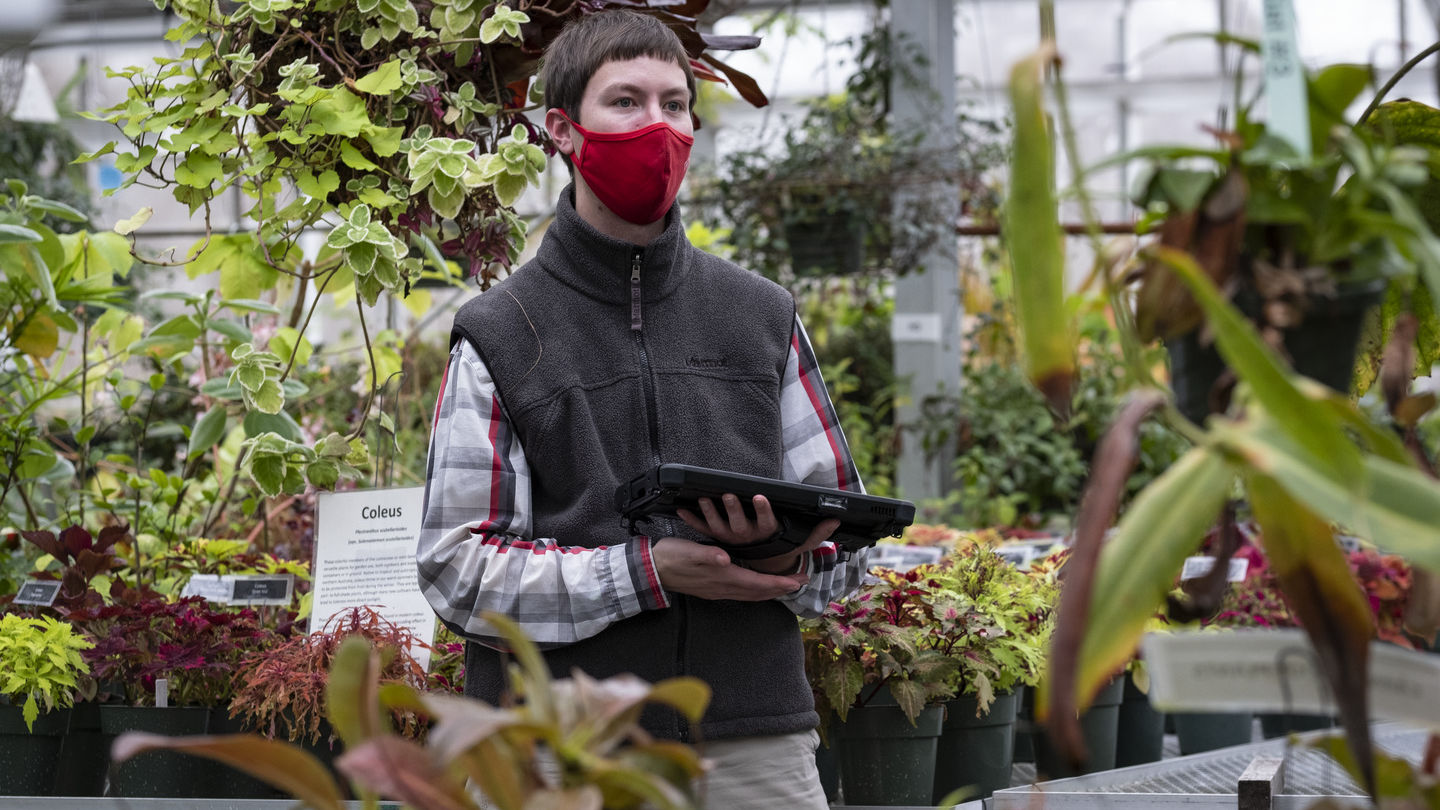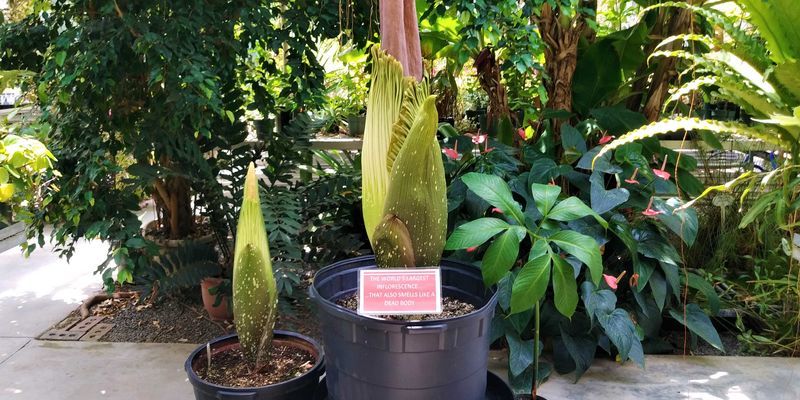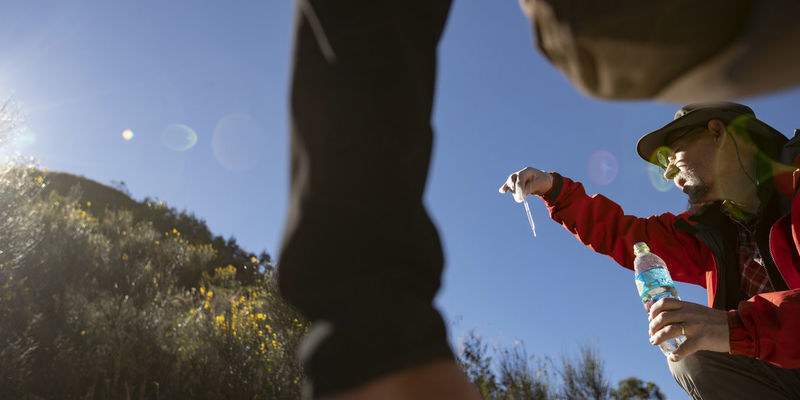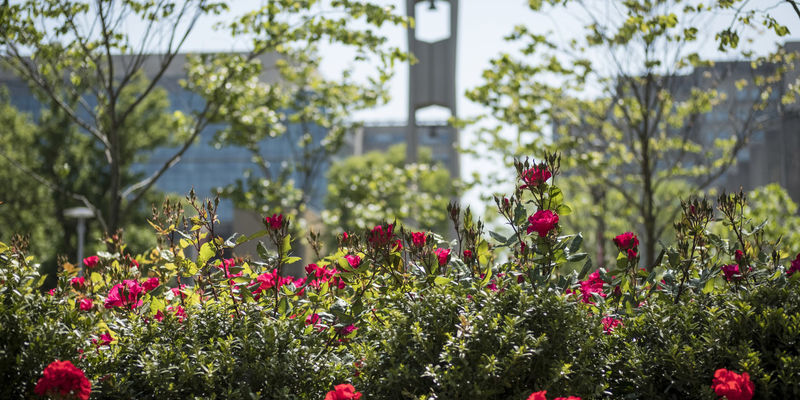What's the big stink: nine things to know about the giant corpse flower
We took a deep dive with horticulture technician Ben Snyder, TYL ’17, to learn more about the ‘Amorphophallus titanum’ plants that are about to bloom at the Temple Ambler Greenhouse and Research Complex.

At Temple’s Ambler Campus, an unusual event is close at hand: the blooming of not just one, but two, Amorphophallus titanum plants, also known as a giant corpse flower. Here, Ben Snyder, TYL ’17, horticulture technician at the Temple Ambler Greenhouse and Research Complex, provides some background on this unique plant and explains why its bloom is so rare.
Temple Now: Where is the plant found in nature? And how common is it there?
Ben Snyder: The giant corpse flower (Amorphophallus titanum) is native to Sumatra, with the greatest number occurring on the western portion of the island. Like many other plant and animal species that have such restricted natural ranges, the giant corpse flower is under threat from habitat destruction, namely deforestation. Being that this plant is also a large tourism draw, it is also affected by commercial exploitation and habitat destruction due to visitors flocking to see the blooms. As a result, the giant corpse flower is currently classified as “endangered” by the International Union for Conservation of Nature Red List.
TN: Why does it only bloom for 24 to 36 hours?
BS: There is no clear reason why certain flowers last for multiple days while others last for only a day or two (or sometimes even one night). One general theory is that it conserves energy for the plant. Once the flower is pollinated, there is no reason for the plant to keep supplying energy to maintain its floral structure. What we tend to call the “flower” of the giant corpse flower is technically an inflorescence. This is a collection or group of smaller flowers all held within the larger structure. The tiny true flowers of the giant corpse flower are open for even less than 24 to 36 hours. The female flowers, located at the base of the inflorescence, open first. They remain receptive for roughly a day. After that, the male flowers, located further up the inflorescence, open and begin producing pollen. This schedule helps prevent self-pollination of the plant.
TN: Why is it so big?
BS: Despite what you may think, this giant flower isn’t large to draw attention visually. Instead, the large size and distinct shape of the giant corpse flower helps spread its unique scent throughout the humid jungle to attract its pollinators. The giant corpse flower generates heat at the base. This heat helps volatize the chemical compounds that make the distinctive scent of decaying meat. The tall, narrow spadix in the center of the flower acts as a chimney, funneling the warm scent higher into the air where it can be more effectively dispersed through dense jungle conditions.
TN: Why does it stink?
BS: Where many plants produce a sweet scent in order to attract bees and butterflies to pollinate them, the giant corpse flower has another set of pollinators it needs to draw in. Giant corpse flowers rely on carrion beetles and flies to pollinate them. These insects are naturally attracted to rotting meat and dead carcasses. The corpse flower takes advantage of this natural attraction by producing chemical compounds similar (or in some cases, identical) to those found in decaying flesh. By doing so, it is able to attract its unique set of pollinators.
TN: Did you do anything special to coax these flowers into bloom?
BS: Giant corpse flowers are known for their unpredictable nature. As a general rule, they need to be 7 to 10 years old and produce a tuber weight greater than 20 pounds in order to flower. These are only averages though, as some plants can take up to 15 or more years to bloom and a fully mature tuber can weigh in at 150 pounds or more. During the years leading up to blooming, the care of the plant is fairly straightforward. The goal is to replicate the equatorial jungles of Sumatra, so warm temperatures and high humidity are a must. They should receive regular applications of fertilizer just like any other potted plant would. Corpse flowers go through cycles of active growth alternating with a dormancy period. The active growth periods can last between 14 and 16 months for a mature plant, with a dormancy period of between four and five months or more in between. During dormancy, we repot the plant, check for any signs of rot or other disease, and weigh the tuber to track its growth and potential to flower.
TN: Where did Temple’s seed come from?
BS: Our oldest batch of giant corpse flowers (the ones currently blooming) were a donation from Ohio State University. They were grown from seeds collected from a pollinated plant there in 2013, and donated to the Temple Ambler Greenhouse Education and Research Complex in 2017. In addition to these, we have specimens that we grow from seed acquired from Dartmouth College in Hanover, New Hampshire, as well as a specimen from the Chicago Botanic Garden. Having these different genetic lines in our collection helps preserve the genetic diversity of the species.
TN: Can I grow my own corpse flower?
BS: Because of their large size and specific growing requirements, giant corpse flowers are most appropriate for greenhouses and conservatory settings. There is a smaller, but no less stinky, version called the voodoo lily (Amorphophallus konjac). This species is very easy to grow and multiplies rapidly. It can be grown as a houseplant or, if placed in a sheltered location with good drainage, it can be grown outdoors. These plants produce a maroon colored inflorescence that can still be up to four or five feet tall, but is much narrower than the giant corpse flower.
TN: The shape looks familiar. What is it related to?
BS: If the shape and form of the giant corpse flower looks familiar, there’s a good reason. This plant is in the same botanical family (Araceae) as many common house plants as well as hardy outdoor plants. Plants like calla lilies, peace lilies, anthuriums and Jack-in-the-pulpits are members of the Araceae family and share the characteristic spathe-and-spadix flower structure.
TN: What else should we know about the corpse flower?
BS: A common misconception is that the giant corpse flower is the world’s largest flower. Technically, however, it is the world’s largest unbranched inflorescence, which is a collection of flowers. The world’s largest flower is Rafflesia arnoldii, which also happens to smell like rotting meat when in bloom.



